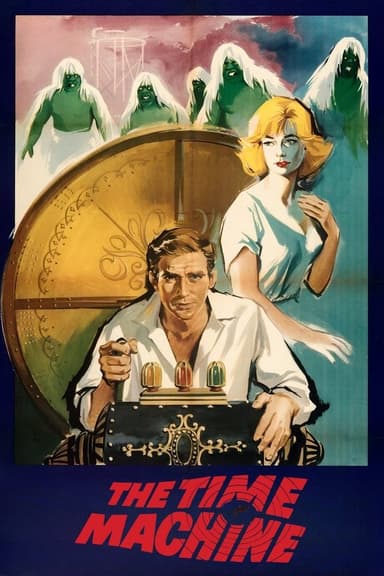
Time After Time
1979 • Adventure, Comedy, Drama, Science Fiction, Thriller • PG
Writer H. G. Wells pursues Jack the Ripper to modern day San Francisco after the infamous serial killer steals his time machine to escape the 19th century.
Runtime: 1h 52m
Why you should read the novel
Discover Karl Alexander's 'Time After Time' and experience the ingenious combination of real literary figures, captivating historical details, and thrilling time travel adventure that goes far beyond the film. The novel delves deeper into the motivations and emotions of H.G. Wells and Jack the Ripper, offering richer psychological portraits and complex moral dilemmas that the movie only touches upon. Alexander’s storytelling invites you into a gripping cat-and-mouse game through time, revealing subtleties and narrative twists that make the novel a true page-turner—perfect for readers who crave intellectual engagement alongside their excitement.
Adaptation differences
One major difference between the book and the movie adaptation lies in the tone: the novel offers a more in-depth exploration of Wells's character, his idealism, and his reaction to the harsh realities of the modern world, while the film maintains a lighter, more adventurous spirit with occasional comic undertones. Another notable change is the portrayal of Jack the Ripper; in the novel, his psychological complexity and philosophical debates with Wells are more fully developed, giving readers a better sense of his twisted moral reasoning, whereas the movie opts for a straightforward villainy.
In terms of plot, the book provides more backstory and development for secondary characters, particularly Amy Robbins, whose inner life and motivations are examined in greater detail. The film streamlines her role, focusing primarily on the romantic subplot and her function as a catalyst for Wells’s emotional growth, sometimes bypassing the nuanced conflicts present in the novel.
The mechanics of time travel itself and Wells’s adaptation to twentieth-century life are further explored in the book, with Alexander dedicating sections to Wells grappling with new technology, culture shock, and philosophical disillusionment, while the film touches on these themes more briefly, in favor of pacing and suspense. Certain plot points, such as Wells’s moral dilemmas and his attempts to reason with Jack the Ripper, are given greater narrative weight in the novel, making for a richer thematic experience than what’s available on screen.
Lastly, several minor characters and subplots present in the novel are omitted or condensed in the movie to streamline the narrative. The book’s ending also shifts the thematic message, offering a more contemplative resolution that contrasts with the film’s tilt towards romantic closure and entertainment. For those intrigued by layered storytelling and philosophical inquiry, the novel offers many rewards not captured in the adaptation.
Time After Time inspired from
Time After Time
by Karl Alexander







